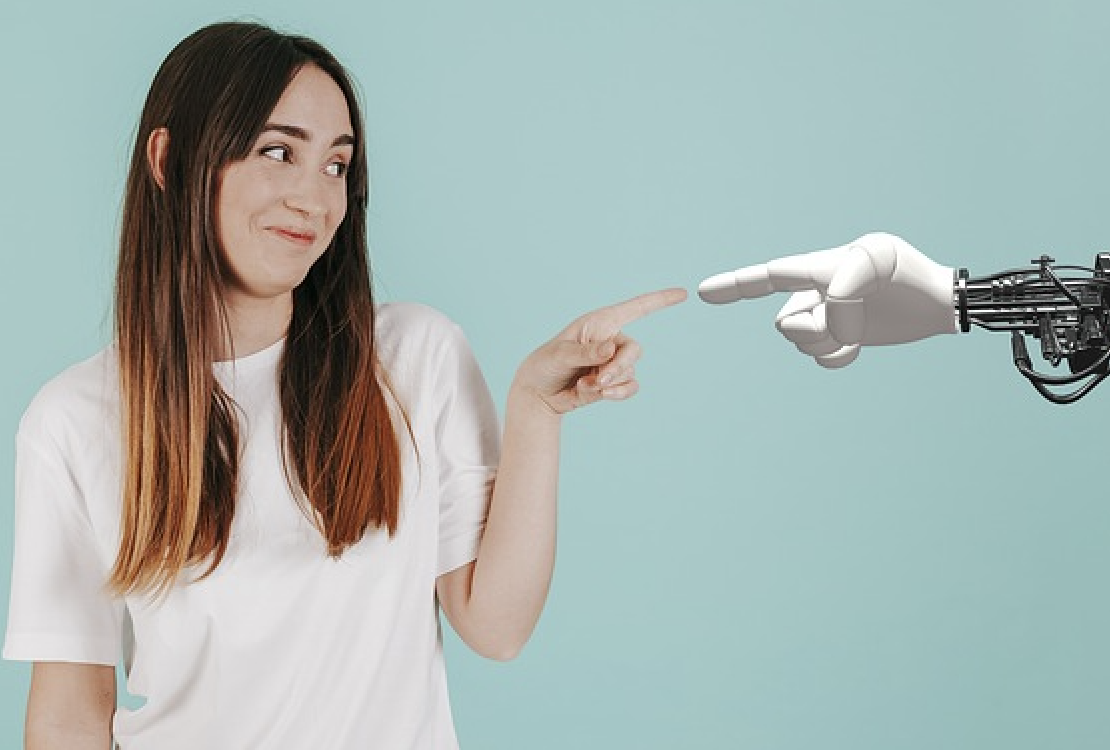The Human Touch

Chatbots are the current must-have. Even many of the smallest businesses have simple cost-effective chatbots providing round-the-clock customer service, helping capture hot leads and easing the burden of answering Frequently Asked Questions. But, do users really like them?
Well, it can very much depend on the sort of bot deployed and whether there is a human agent available if the bot can’t handle the query.
Structured flow
If you are greeted with buttons or multiple-choice options when you start a conversation with a bot, the bot is instantly declaring its limitations. This is the most basic kind of bot and relies on the users following the decision-tree correctly to arrive at the answers for their queries. It provides the least personalised experience but not necessarily the worst. If the button questions eventually lead to a human agent, then it seems that users are happy to interact with them.
Keyword matching
The next level of sophistication is a bot that pattern-matches on keywords, allowing the users to type their own text. The bot will supply answers depending on the keywords matched. Conversations don’t have to follow a predefined path and the bot can move to another topic if it finds other keywords in the user input. But users can be unpredictable and these bots can easily become unstuck. Again, if there is a human agent to takeover if the bot can’t handle the query, then users are willing to co-operate with the bot first.
Natural Language Understanding
The smartest bots are AI-powered bots with NLU engines that continue to ‘learn’ from their conversations with users. However, users often use nuanced language which can be challenging even for human customer service representatives. Getting these bots to perform capably is an ongoing process requiring many hours of transcript analysis and optimisation but the result is a personalised experience that resembles a conversation with a human. These bots ‘learn’ from their mistakes so to avoid frustration in the initial phases, there must be a human agent available to takeover if the bot does not understand.
Other influencing factors
The likelihood of a customer interaction with a chatbot significantly decreases over the age of 65, with most willing users being under the age of 45.
Millennials are more likely to use text-based channels of communication where it is easy to place a bot, while older generations prefer phone and email conversations.
Understanding the customer base’s preferences for interacting with customer support is crucial to the success of any chatbot.
To summarise…
Studies show that most users are comfortable using a bot to get answers to simple questions and they like the speed at which a bot responds.
For more detailed questions, if the ‘conversation’ eventually leads to a human agent, then they are happy to interact with the bot first. We built a concierge bot for a telecommunications company and saw that nearly all customers worked perfectly with the bot in order to be transferred to the right team.
However, it’s true to say most customers, particularly in the older age groups, still prefer human support over AI assistance (although the gap is closing year on year). For this reason, no matter how good your bot is, it’s important to include an escalation path to a human agent.
Building trust
If the primary concern is to use a chat bot to find a human agent, then we may ask ourselves why even bother with the bot in the first place? But the bot can ‘triage’ the customer, gathering all the details necessary for the human agent to handle the enquiry quickly once transferred. This, in itself, is a valuable time-saver.
Then, of course, the bot is available for those out-of-hours queries. Even when there is not a direct escalation to an online human agent, it can gather the contact and enquiry details so that the human agent can follow-up the next working day.
Ultimately, it’s a case of building confidence in automation. During the pandemic, we built a bot for a company who had to severely reduce the customer service team due to a slow-down in business. The bot was a hybrid between keyword-matching and structured flows and had an email escalation to human support. The bot gave the correct answer for many queries, yet a lot of those visitors still requested escalation and asked the question again, only to receive the same answer from a human.
Over time, users will see that bots can handle various simple queries correctly. As a result, they will learn to trust automation and in the future they will be confident in using it for a wider range of tasks. For the moment though, the path to the human agent is still essential to the success of a bot.
Sign up for a free demo today
Streamline your customer support, sales and marketing through conversational AI and chatbots.
Get a Free Demo Today